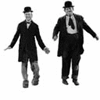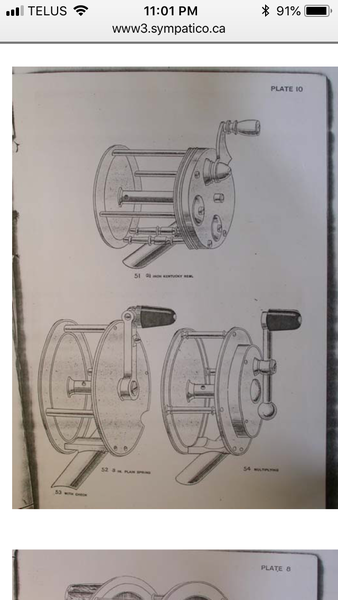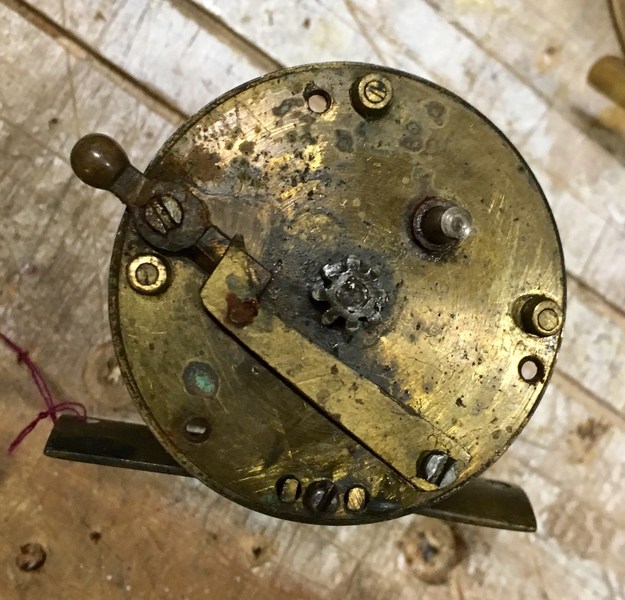To add to the can of worms Richard opened: I asked a noted, but shy, authority if he had seen any British ball-handles like Richard's. His reply, along with two photos:


"Very interesting. The short answer is no, I haven't, at least not a multiplier. The photos attached show two single-action, ball-balanced-handle, sliding stop reels. The one on the right I'm pretty sure is American with all brass screws, brass post with no washer holding crank knob, a machined one-piece foot and painted wood crank knob; the stop slides into a hole drilled into the flattened ball. The one on the left looks very British (steel screws holding headplates, two-piece foot consisting of sheet metal foot attached to centrally-widened bridge by three iron or steel pins, supporting brass brass pins on either side of the screw holding the rear headplate) until you get to the crank. The balance ball on this one is also flattened but not pierced; the sliding stop simply blocks the crank. The crank knob is also held by a brass post, unusual in Brit reels; the posts were usually iron or steel, sometimes with brass washers, sometimes just peened over. American crank posts seem to have been mostly brass. The crank knob is rosewood and shaped in a very typical American way. Knobs on early Brit reels were very seldom hardwood, usually brass, bovine bone or ivory. The pillars on both reels are secured by rounded nuts. I'm not sure which way to go with this one. Both cranks appear to be original to the reels.
As for the Haywood shown, it's unusual for a Haywood reel for two reasons: first, the screw securing the crank is iron or steel and every Haywood reel I've seen, and I've seen a lot of them, has featured a brass screw; second, the crank knob is apparently bovine bone but oddly shaped and scribed for a later Haywood. (One of the few facts in Chapman's book that I found useful appear on the single page he dedicated to Haywood. He says that between about 1850 and 1860 a man named Ryder was involved in the Haywood business just before it tanked, hence the H*R.) These anomalies might indicate that the crank was a retrofit during the reel's working life. Replaced cranks are often found on these early reels, including a few Ustonson reels I've seen. It seems odd that, at this point, Haywood would cast these cranks exclusively for the American market, but it's not impossible.
Hope I've managed to confuse the issue. It sure confuses me."
Well, that unsettles that, eh?















